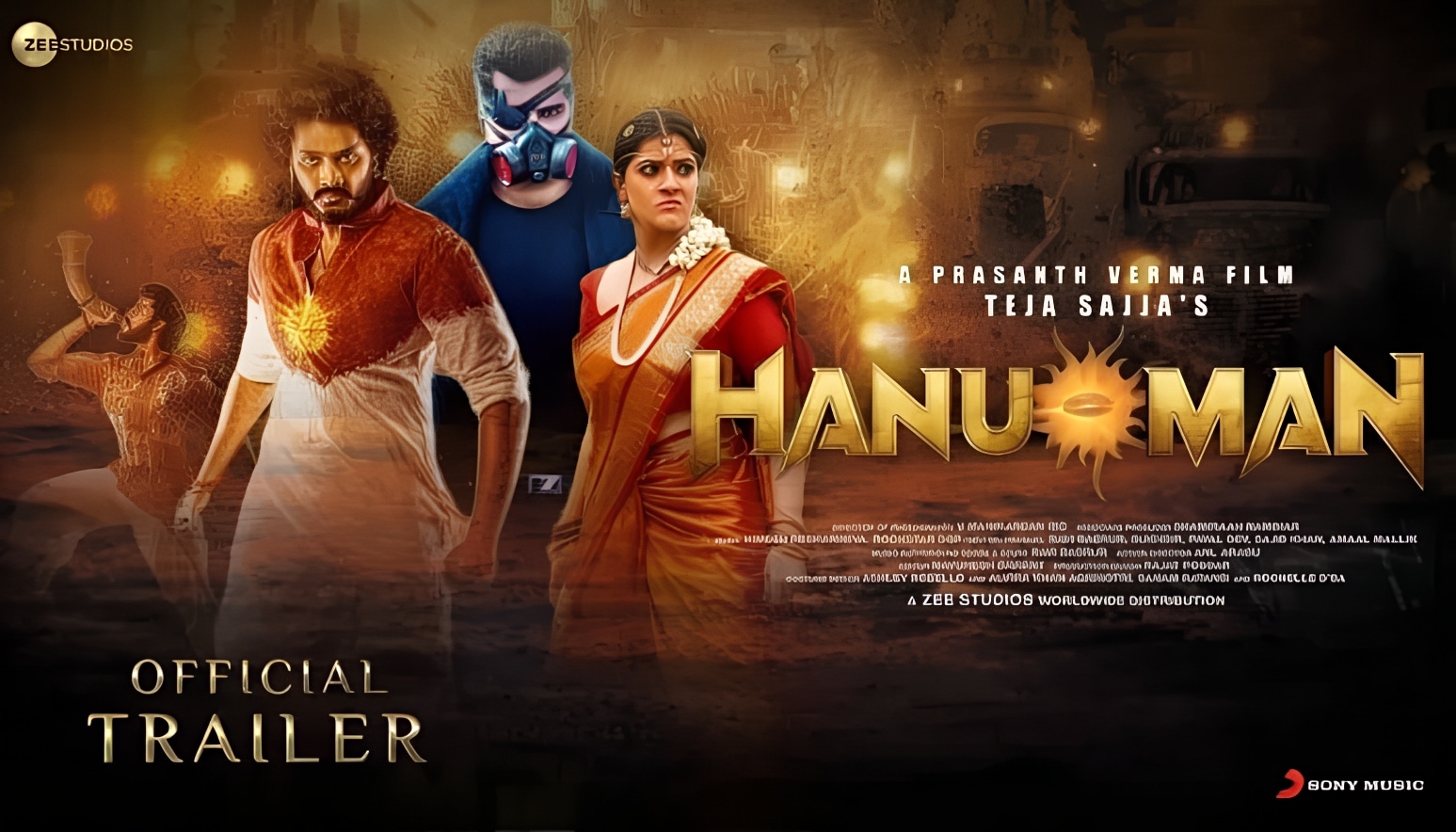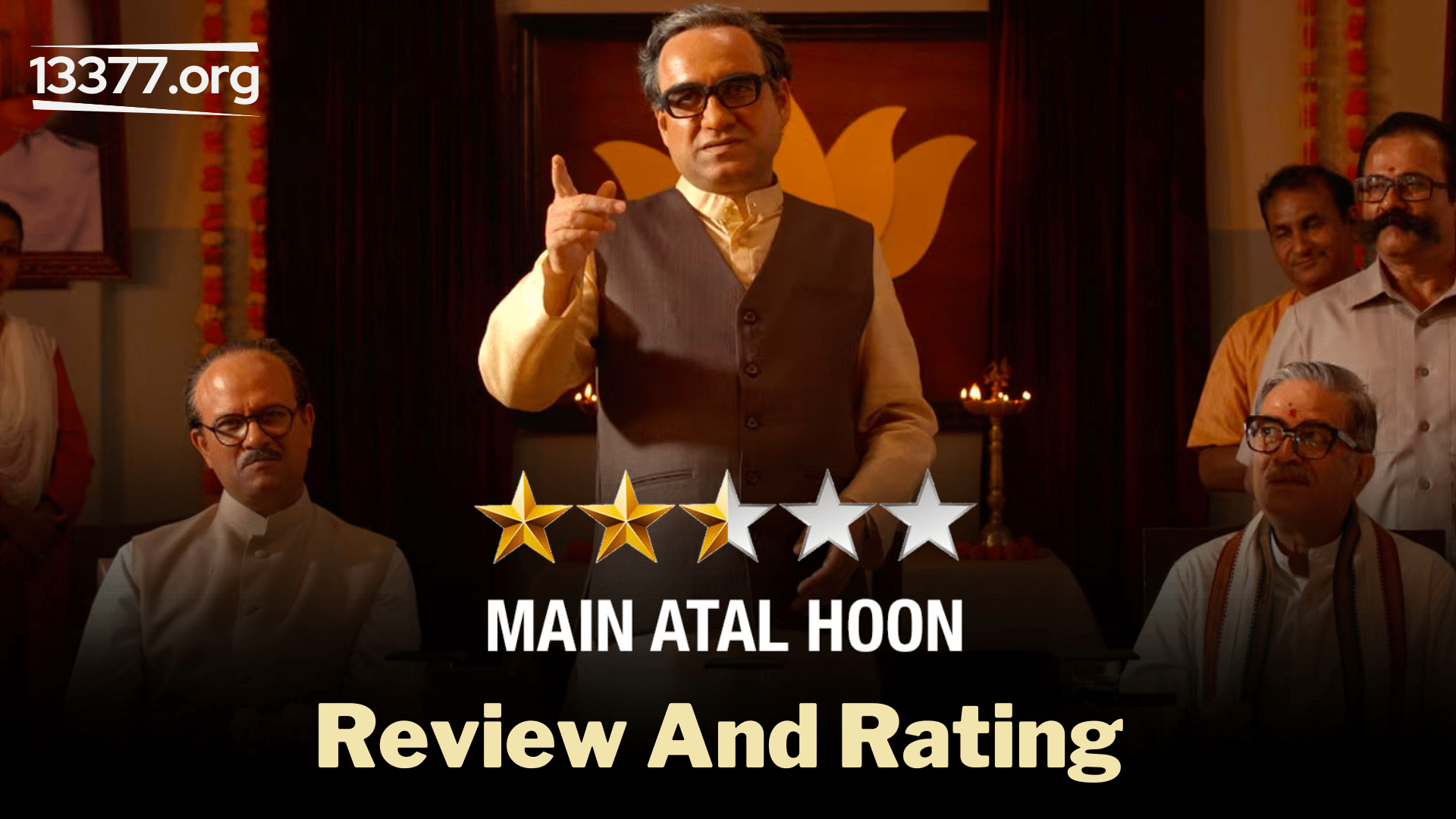Director and Writer: Prasanth Varma
Cast: Teja Sajja, Amritha Aiyer, Varalaxmi Sarathkumar, Vinay Rai, Vennela Kishore
Duration: 150 mins
Available in: Theatres
In the movie HanuMan, there is a scene where Hanumanthu (played by Teja Sajja) tries to convince his friend that he has acquired superhero powers. He first punches a wall made of stones as a nod to a similar scene in Mahesh Babu’s Athadu (2005). However, his friend remains skeptical. To prove his point, Hanumanthu then kicks a water hand pump, referencing a famous scene from Allu Arjun’s Arya (2004). Despite these efforts, the friend still doesn’t believe him and explains that our heroes do such things regularly. This scene highlights why the superhero genre has not gained much popularity in India, particularly in South India. Our movie stars are already regarded as superheroes, and we readily accept that they can do the impossible. For instance, if a character takes a punch from Mahesh Babu or Pawan Kalyan and flies ten feet in the air, we don’t question it because we have already accepted them as demigod-like figures.

When Telugu masala meets superhero-ness
So, how do you crack the superhero formula in an industry where a mass hero can do everything—from bending iron to taking down an army with just two iron rods? How do you create a superhero and make the audience—who are already okay with insane, unbelievable action sequences—root for the character? What happens when the Telugu masala treatment meets the superhero template engineered and exploited by Hollywood blockbusters? Hanuman is a fitting answer to all these questions, and it proves that when the emotion works out, it makes up for the technical hiccups. Let me give you an example: the blend of Telugu masala and superhero-ness gets a cracker of an exhibition in the form of a song-and-action sequence set in a forest when our superhero takes down bandits using his abilities while women preparing avakaya (mango pickle) sing a folksong in unison. This, to me, is where HanuMan’s masala nature peaked, and this is how the film fully embraces its identity. And this is a sequence Teja Sajja will likely be proud of for the rest of his career. From a screenplay perspective, I found the placement of this sequence (which happens right after the protagonist learns a big truth about the villain) somewhat debatable because, logically, you’d expect him to address the main conflict, but the detour was still fun.

It is a classic fight between one who deserves the power and who seeks it
It can be a challenge to create a superhero character in an industry where mass heroes can do everything from bending iron to taking down an army with just two iron rods. In Telugu cinema, where the audience is already accustomed to insane and unbelievable action sequences, it can be difficult to make a superhero that the audience will root for. However, Hanuman provides a satisfactory answer to these questions. The film demonstrates that when the emotion of a character works, it can compensate for technical hiccups.
For instance, in Hanuman, the blend of Telugu masala and superhero-ness is showcased in a song-and-action sequence set in a forest. Our superhero takes down bandits using his abilities, while women preparing avakaya (mango pickle) sing a folksong in unison. This sequence is where Hanuman’s masala nature peaked, and the film fully embraces its identity. Teja Sajja, who plays the protagonist, will undoubtedly be proud of this scene for the rest of his career.
However, from a screenplay perspective, the placement of this sequence (right after the protagonist learns a big truth about the villain) is somewhat debatable. Logically, the protagonist should address the main conflict, but the detour was still enjoyable.

A Done and Dusted Template Powered By Imagery
In brief, HanuMan movie seems to be unoriginal and quite predictable at numerous points. It follows a well-known template of an underdog protagonist, a moment of hopelessness, and a motivator that uplifts the hero’s spirits at the end. There isn’t anything new or innovative on paper, and the recency bias also plays a role. The introduction of Anjanadri and Hanumanthu’s fun with his abilities both remind us of other movies we’ve seen recently, and Michael’s character is not very unique. Moreover, the VFX, especially in the final showdown, doesn’t match up to the ambition in some places. The VFX in a highly intense scene where Hanumanthu has to save a dear one from dying is done poorly, which distracts from the emotional stakes. Despite these issues, HanuMan tries to surprise the audience within the generic bounds it is operating in, with strong imagination and imagery by Shivendra that keeps the movie going.
The film has put a lot of effort into creating visually striking shots that are reminiscent of the SS Rajamouli effect. Examples of this can be seen throughout the movie, such as fishes with gills that look like wings when they jump out of water, Hanumanthu standing on a massive Hanuman statue that has been carved out of a hill, and even Hanumanthu sitting on top of a pile of men, which is similar to the image of Hanuman sitting on his tail. It’s clear that the filmmakers were committed to creating memorable images. The film has a lot to do with mythology and supernatural abilities, but it doesn’t always take itself too seriously. There are humorous references to Teja Sajja’s popular dialogue as a child artist in Indra (2002), as well as self-aware humor that pops up throughout the movie, which makes it light and funny for the most part. A special mention should be given to the track featuring a monkey named Koti (voiced by Ravi Teja), which is played for laughs for the most part and then used to land a glorious mass moment towards the end. GowraHari’s music brings so much energy to the film, at times even compensating for some subpar visuals by selling and sustaining the emotion.
If Prashanth had all the resources, he could have fulfilled his vision thoroughly. Nonetheless, HanuMan is an inspiring start, and it might be the biggest surprise this Sankranti.













